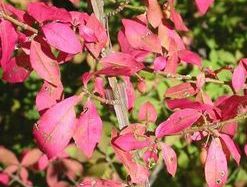You are here
The Biological Significance of Leaf Color Change


Not long ago the consensus was that autumn leaf colors were the result of the unmasking of the carotenoid or anthocyanin pigments, and could have no function. We now know that the anthocyanins are not un-masked, but are made. There is growing evidence that these colors may have clear functions, assisting plants during the autumn. However, the riddle is explaining such function in leaves that are dying. Such a functional role must benefit the plant well beyond the short life of the leaf, and must extend into the following year. How might plants be benefited?
Physiological Explanations - especially anthocyanins in red leaves
Anthocyanins may be physiologically important in aging leaves in two ways. First, anthocyanins are very strong anti-oxidants. There is growing evidence for the nutritional importance of anthocyanins in diet in slowing the onset of some symptoms of aging.
Secondly, anthocyanins act as a sunscreen, protecting chloroplasts that are vulnerable as they take the chlorophyll molecules apart under autumn conditions of cold temperatures and bright sunlight. The pay-off for the plant is that this protection could increase the efficiency of resorbing the nitrogen that is released from the breakdown of chlorophyll and the enzymes of photosynthesis, taking it from the leaves and putting it back into the branches and trunk to be used the next spring. The evidence (documented in the scientific bibliography) is that the redder leaves have less nitrogen when they fall from the trees, compared to leaves without anthocyanin.
Biological Explanations
Changes in pigments during leaf aging changes their appearance to animals. Animals might not recognize the leaves, or might recognize them more easily, depending on their color sensitivity. Thus, changes in leaf color could have the following functions.

